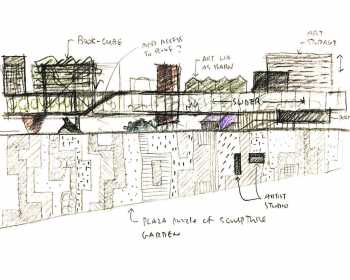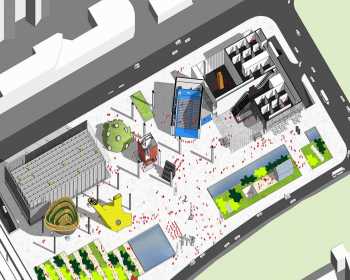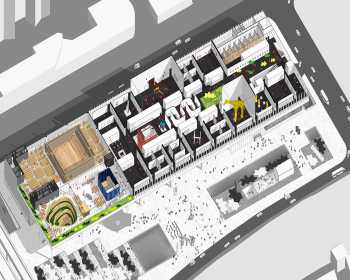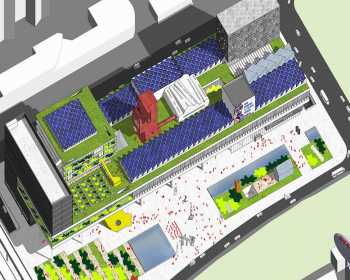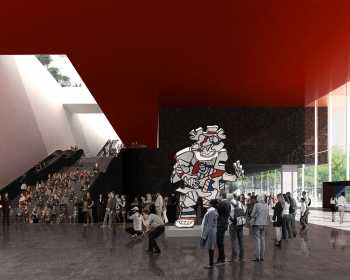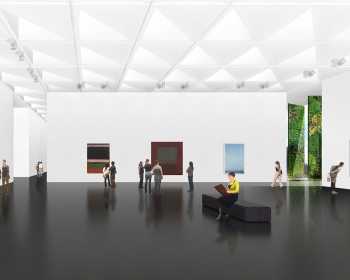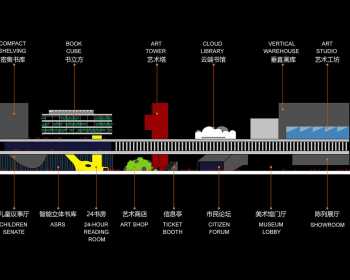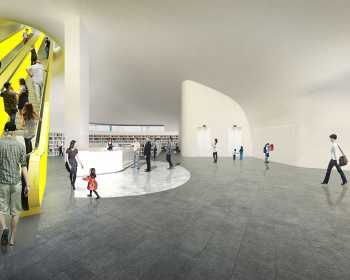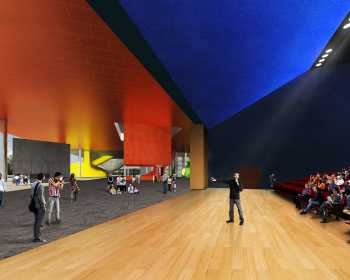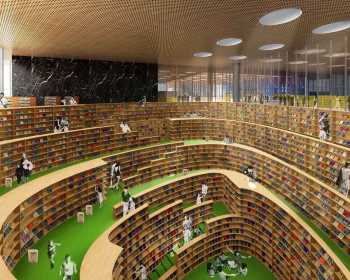New Shenzhen Art Museum and Library
In May 2015, Shenzhen Art Museum and Shenzhen Library organized an international design competition for their new homes in Longhua District. 134 firms submitted concept proposals for the first stage, 8 firms were selected to enter the second phase competition in July, among them OMA, Steven Holl, Mecanoo, OPEN, KSP, and others. Below is OPEN’s competition entry for the 2nd phase.
Design Concept
After 30 years of rapid urban growth, the city of Shenzhen is still undergoing substantial development. The need to expand the capacity of both the current library and art museum is a direct response to the growing population of Shenzhen, and its effort to build a better cultural life. The city has located the site for the home of the new Art museum and the Library at the center of new Longhua District, with the hope it will also boost the development of its surrounding new urbanized area.
OPEN sees the potential of the joining the power of these two cultural institution, to create something new to capture the free and creative spirit of Shenzhen, and the opportunity to re-invent the public image of the cultural institutions in China.
We seek to redefine the possibilities of future art museums in this design, with its gallery spaces expand horizontally like a Chinese scroll painting, modular and continuous on one floor, to bring maximum curatorial flexibility and easy viewing experience; and its art storage expands vertically, adaptable for future growth of the museum collection.
The library, with its vertical organization, provides maximum efficiency for the book traffics in the building, while the seemingly mundane yet hugely sophisticated modern process of storing and circulating books becomes the spectacular view for the city and the light rail passing by. The experience of reading in books is organized into distinctively different spatial topologies based on the unique operation-hour difference, filtering and transiting from urban noise to zen-like quietness.
UNITY
The design brief calls for two separate buildings for the two independent institutions. We strongly felt that the relationship between the two will have a significant impact on the character of the urban space. Rather than two isolated building blocks confronting each other, it would be much stronger to have them jointly forming one mass that will become the focal point of the new urban center. The institutions can be managed independently, yet also connected at the same time. By removing the gap between the two buildings, we also maximized the horizontal presence for their programmatic needs.
OPEN
We hope the building will manifest itself in a very open and welcoming way, and let the arts and the books be accessible to everyone. Through the making of public building and the open spaces, we can foster an urban spirit that is free, generous and positive. The building is lifted off the ground to make a floating podium, transforming the entire site into an urban park open to all citizens. From the floating podium, spaces are growing both upward and downward, as the organic formations found in nature. The large shaded public plaza works perfectly for the subtropical climate.
GROWTH
Both the art gallery and the library share one thing similar—the ever growing needs of storage spaces, for arts or for books. We did not adopt the normal strategy of confining storages into basement, rather we acknowledged the importance of the growing storage, and designed an art storage tower that can expand vertically; a massive and compact book storage building that efficiently circulates the vast amount of books.
For the art gallery, the horizontally expansive building made it possible to accommodate almost all gallery spaces on one continuous floor. The galleries are designed to be a modular open system that provides flexibility never seen before: galleries can be partitioned freely as the curators need, or all gallery walls can be removed to accommodate large art expos.
Thus, the building can grow both the vertically and the horizontally, adapting to flexible functional needs. The resulting building mass also forms strong visual identities.
SPECTACLES
Within the floating mega-form of main programmatic spaces, we created a series of spectacles – these nodes are aimed to inject the surprise and poetry to spatial experience, and encourage the public to explore new ways to inhabit this unique public cultural building. They bring life to the urban spaces.
